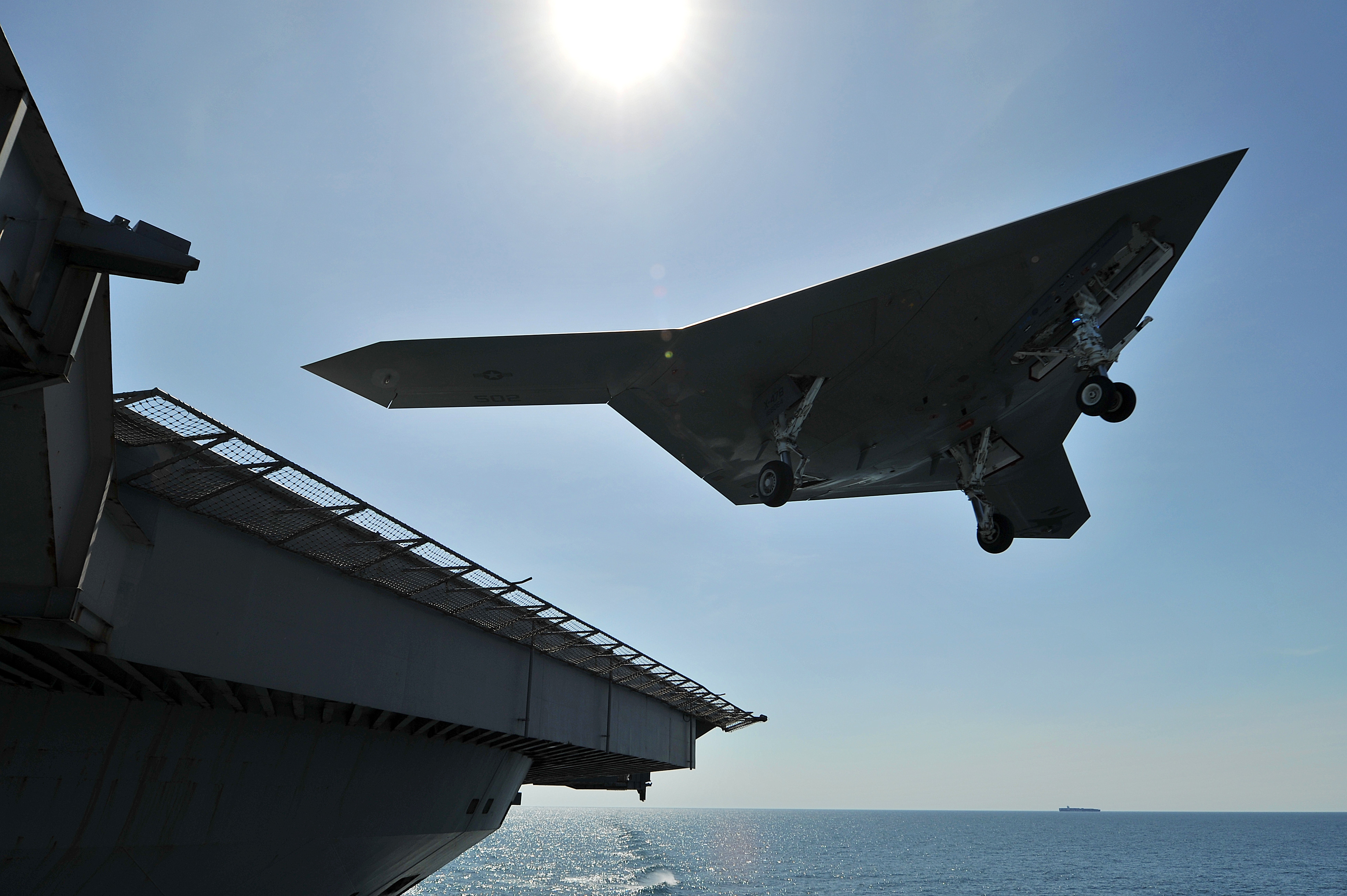
The U.S. Navy is considering using its forthcoming Unmanned Carrier Launched Airborne Surveillance and Strike (UCLASS) aircraft as an aerial refueling tanker to free up its fleet of Boeing F/A-18E/F Super Hornets for more strike missions, several sources told USNI News.
“It’s definitely of interest,” one industry official said.
“On a typical air operations day, they might have to dedicate up to five Hornets to do tanking.”
Most of those tanker sorties are for “recovery tanking” around the carrier.
According to industry sources and retired service officials, up to 20 percent of a carrier air wing’s Super Hornet sorties are consumed by the tanker mission.
Further, over the past ten years, the Super Hornet fleet has seen higher than expected fleet utilization rates because of the demands of the Iraq and Afghanistan wars, industry and Navy sources said.
Particularly, the heavy “five-wet” configuration eats up fatigue life expectancy (FLE) much faster than a lighter configuration.
“We needed to cycle tankers through our airframes in order to balance out the airframe fatigue numbers,” one Navy source said.
Naval Air System Command (NAVAIR) officials said that while the tanker mission does impose stress on the Super Hornet fleet, it is in line with the service’s expectations and were factored into the aircraft’s design.
“Most of these stresses on the tanker mission are on actually when they catapult,” said Scott Dailey, NAVAIR F/A-18E/F and EA-18G air vehicle program manager. “That’s factored into how we manage our fleet in tracking fatigue and flight hours.”
Airframes are cycled to minimize the impact of the tanker mission on the overall Super Hornet fleet. Only a few aircraft at a time are use for tanking, and as those planes are rotated, the fatigue life balances out, Bailey said.
“It does consume flight hours, but no different than long flight hour mission across what is normally scheduled,” he said.
Bailey said that the Super Hornet fleet is “still tracking” to the service life limits that were originally expected from when the jet was still in its engineering and manufacturing development phase.
“We have a service life assessment program that is undergoing now that will enable us to assess the life of the aircraft as it is today,” Bailey said. “Then a follow-on service life extension program which will extend the service life of the aircraft out to the Navy requirement.”
Bailey said that the Navy requirement calls for the Super Hornet fleet to remain in service until the 2030 to 2035 timeframe. The Super Hornet was designed for a 6000-hour lifespan, Bailey said. The service life extension would push that out to 9000 hours. Potentially, the Super Hornet could be extended past even the 9000-hour mark, but additionally work would be required, Bailey said.
But industry sources are not convinced. By the mid-2020s, there probably will not be enough UCLASS air vehicles in the Navy arsenal to perform the aerial refueling mission especially as the Super Hornet airframe start to wear out, the industry sources said.
In that case the Navy will have to come up with an alternative.
“They may be forced to have a dedicated tanker on the deck,” an industry source said.
“This idea that UCLASS is somehow going to save Super Hornets from doing tanking—I’m not seeing how that’s really going to work when you look at the lifespan of the Super Hornets and when UCLASS is going to be in the fleet.”
That’s especially true if a carrier would only carry six UCLASS air vehicles—which would have to conduct intelligence, surveillance and reconnaissance missions in addition to the tanker mission.
The source suggested the Navy recover some of the retired Lockheed S-3 Vikings from the boneyard at Davis-Monthan Air Force Base in Arizona.





